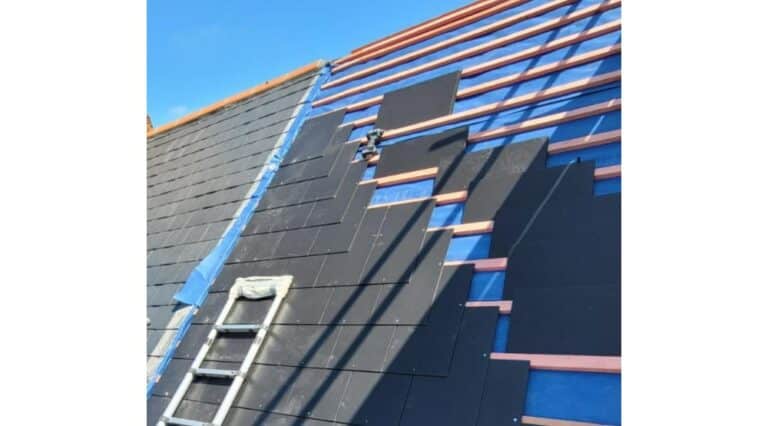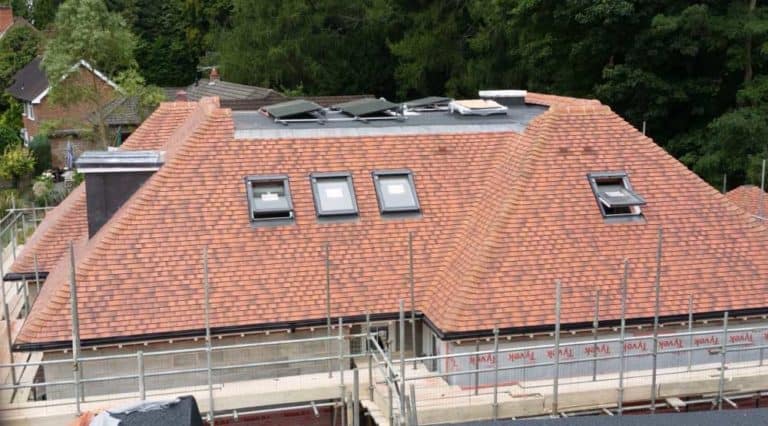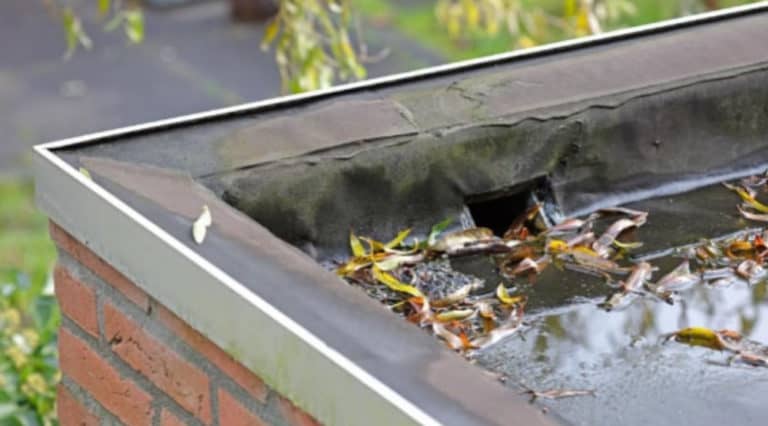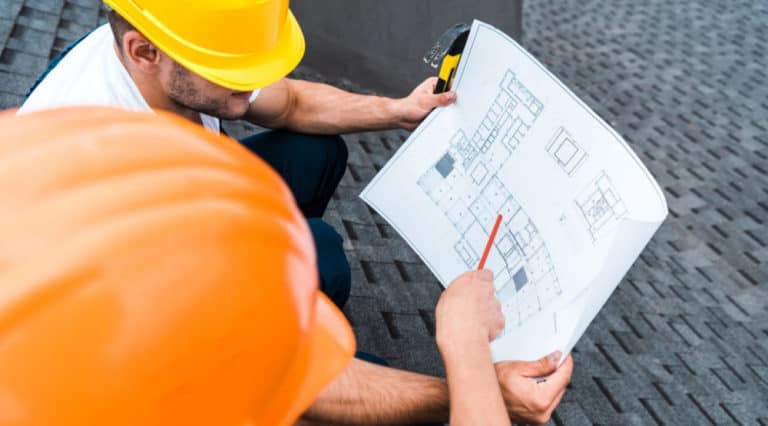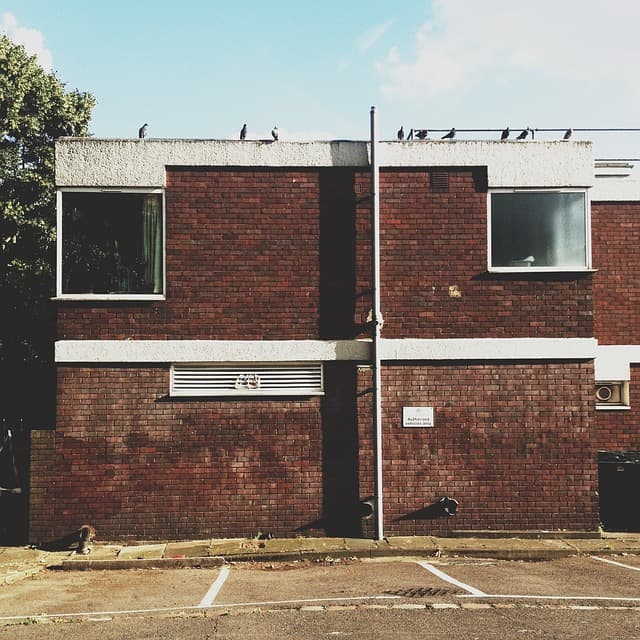Find My Local Expert Roof Repairs – Tile, Slate &...
Read More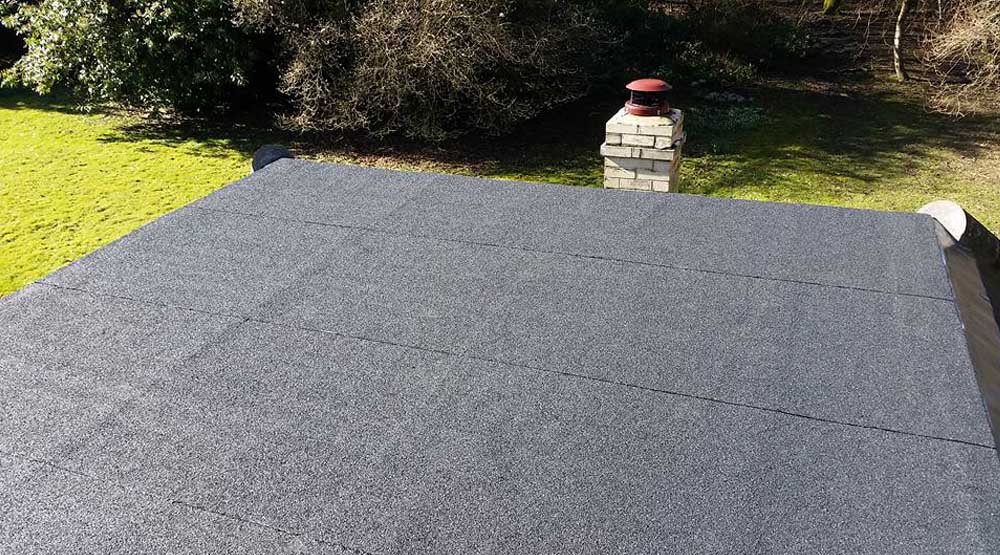
Is It Safe to Walk On a Flat Roof?
When it comes to working on a roof—whether it be the roof itself or something else up there, like a vent, or chimney—most of us are happy to leave it to the professionals. It’s not unusual for a homeowner to break the wall filler or change the occasional light switch themselves, but when it comes to climbing up onto the roof, there’s too much risk for most of us.
Much of that risk may seem mitigated if you have a flat roof, however. Sure, it may still be tricky getting up there, but once you’re on a flat roof, it’s just like standing on any other flat surface, rather than the dangerously sloped sides of a typical pitched roof.
But is it safe to walk on a flat roof?
You may not need to worry about sliding down the shingles as you would with a gable roof, but what about falling through the roof?
Conversely, pitched roofs slope downwards at a substantial angle, and will often have two slopes, with the most common design being a triangular affair that is rather like a tent. Pitched roofs can be far more complicated when buildings are more than a basic four-sided square or rectangle, but each individual roof section is typically the same design.
Is It Safe to Walk On a Flat Roof?
As you might have expected, how safe your flat roof is to walk on may vary depending on the roof. Some roofs are built for walking on, such as for maintenance. These roofs will not only be strong enough to support your weight, but they will likely also have a surface suitable for walking on, and may even have some kind of safety measure around the edges of the roof. This is typically what you will find with flat roofs on large buildings, such as commercial buildings.
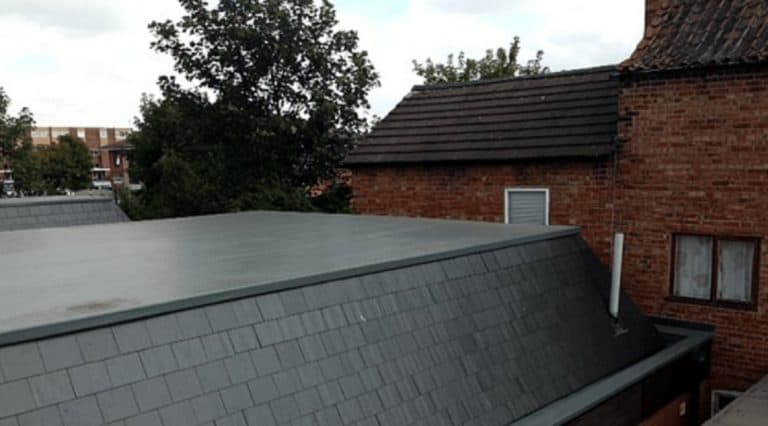
In contrast, smaller flat roofs—such as those found on extensions or garages—do not need to be strong enough to walk around on for things like maintenance, and most of the work that would need doing could be done from the sides. For this reason, they may not be built to withstand people walking around on them. They are also unlikely to be built with materials or a design that is suitable for walking on and maybe especially slippery, especially when wet.
So, the first port of call when deciding whether you should be walking on your flat roof is checking how it was constructed if you can. If you have any documentation on the roof—or better still; you know the builder—you can find out directly.
Unfortunately, that’s not always an option, so let’s look at some other ways to tell if your roof is safe to walk on.
Roofing Material
Firstly, let’s consider the roofing material itself. Though it’s no guarantee that a flat roof is safe to walk on, some roofing materials are definitely not safe to walk on, regardless of how the roof was constructed. These include;
- Metal roofing where the roof is constructed from sheets of metal on top of the internal structure.
- Fiberglass roofing, again where the roof panels are laid over the internal roof structure.
There are materials that can be safe to walk on, however, though we need to stress that the use of these materials does not guarantee the roof is structurally up to being walked on. These include;
- Polyurethane
- Single Ply
- Rubberized
- Asphalt
- Gravel-topped
As a general rule, any flat roof that is part of a residential home should be strong enough to support your weight, but it’s not worth your safety to find out the hard way that your particular flat roof is not.
Another thing to look out for is the underside of the roof. If you can see the internal structure of the roof from inside the building and it is essentially just roofing panels laid over the roof structure, it is almost certainly not suitable for walking on. If the internal structure of the roof is hidden (likely above drywall or cladding) then there is a good chance the roof itself will be strong enough to support your weight, since it will have to have been treated to withstand the elements.
But, with all of that being said, you absolutely should not assume that just because your roof has a waterproof material on top, or because you can’t see the internal structure of the roof, that it is safe to walk on.
Why Walk On Your Flat Roof?
The most common reason for needing to walk on a roof is to inspect it. A visual inspection can be carried out by anyone, as you’re looking for obvious signs of damage, rather than something that would need special tools or expertise to detect. Of course, the downside is that you need to be in a position where you can carry out a visual inspection.
Some of this can be done from ground level, but for those of you with flat roofs that can be walked on, it is a perfect platform to inspect the higher regions of a property.
You may also want to walk on the roof to perform maintenance yourself, including maintenance on other parts of the property, such as antennas, or roof vents. Of course, we do not advocate anyone doing anything they are not either qualified to be doing or confident enough in what they are doing.
What Are the Risks of Walking on a Flat Roof?
The first risk, as we’ve covered above, is the roof not being strong enough to support your weight. If you go strolling around on a roof that is not up to the task of holding your weight, the best-case scenario is that you just damage the roof, while the worst-case scenario is you falling through the roof, causing plenty of damage and maybe injuring yourself in the process.
Beyond the strength of the roof itself, there is also the matter of your safety being up on a high place like that. Even a fall from a single-story flat roof could spell serious injuries—or worse—and a fall from higher up doesn’t bear thinking about.
Generally speaking, if a roof is intended to be walked on for anything more than occasional maintenance work—such as the roof of an apartment building—there will be safety precautions taken. At the very least there will be a short wall around the edge, or perhaps a taller fence. For smaller flat roofs like you would find on a typical residential property, there is unlikely to be any such safety precautions in place. As such, the risk of you falling from the roof if you are not careful is greater.
Finally, there is the risk of damaging the roof itself, or other things up there. If you were to accidentally kick a roof vent, put your foot through a skylight, or even just cause unnecessary wear and tear to the roof surface itself, you could be looking at additional costs to put things right.
Are There Ways to Strengthen my Flat Roof?

Unfortunately, there is no safe way to reinforce a flat roof without involving a professional. It is unlikely that your roof will be built to take more substantial roofing material, so just putting stronger material over your existing roof is not advisable. Remember, the calculations that go into a roof include weather, such as wind force, and the weight of snow and rain. Just because your roof can take the additional weight of stronger roofing materials at first doesn’t mean you won’t have trouble further down the line.
To properly strengthen your flat roof, you will need to have the support structure modified accordingly. This could mean reducing the span of the beams that are supporting the roof, or it could mean adding additional beams to provide more support to the structure.
It is the determining of which method is best, as well as things like how many additional beams to add, or how much to reduce the span by, that requires the attention of a trained structural engineer. Misjudging this aspect of the process can result in serious problems down the line.
Conclusion
For the most part, a roof that is part of a residential or commercial property where that roof covers an interior room, such as an office, or bedroom, should be strong enough to walk on, as it will need to meet certain standards in order to keep the interior protected from the elements. That being said, you should take steps to make sure the roof is definitely strong enough before your go walking on it.
If and when you do go walking around on your roof, it is important to take proper safety precautions. Even a low roof—such as a flat roof on a single-story building—can lead to serious injuries if you were to fall from it. And a high roof practically guarantees them.
It’s also important to remember that there are likely to be things up there that can be damaged, such as roof vents, drainage systems, skylights, and the roof itself. You don’t want to climb up onto your roof to save yourself a little money with some DIY work only to cost yourself more money in accidental damage than you would have spent on the roof repair.
And, remember, any changes to the structure of the roof should involve a structural engineer, as getting that part wrong can have serious consequences.
You May Also Like...
Pitched Roofing
Find My Local Expert Pitched Roofing The fundamental design of...
Read MoreFlat Roof Drainage Systems
Find My Local Expert Flat Roof Drainage Systems Flat roofs...
Read MoreDo I need planning permission in changing a flat roof to a pitched roof?
Find My Local Expert Do I Need Planning Permission When...
Read MoreDo I need planning permission for a flat roof extension?
Find My Local Expert Do I Need Planning Permission for...
Read MoreNeed Help With Your Flat Roof?
My Trusted Expert Guarantee
Experts Have Been Vetted & Approved
